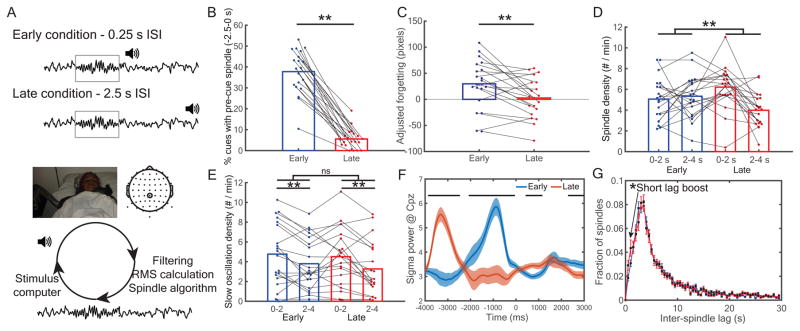Figure 4.
Memory retention was impaired for items cued inside versus outside the spindle refractory period. (A, top) In experiment 3, TMR cues were presented either early or late after a spindle was detected, placing them (respectively) inside or outside the spindle refractory period. (A, bottom) Real-time schematic. EEG traces from electrode CPz were filtered between 11–16 Hz, the RMS signal was calculated, and detected spindles were sent to another computer to present cues at the appropriate times. See also Figure S3. (B) A manipulation check showed a higher percentage of pre-cue spindles (<2.5 s) in the early than late cued conditions. (C) Late cues significantly enhanced memory retention relative to early cues. (D) Late cues showed a significant spindle boost early in the post-cue interval, whereas early cues did not. (E) Both early and late cues boosted slow oscillations, but there was no interaction between conditions. (F) Cue-locked analyses revealed higher early post-cue sigma power for late relative to early cues. All horizontal bars indicate p < 0.05 segments. (G) Comparison of inter-spindle lags in experiments 1 and 2 vs. experiment 3 revealed an increased number of very short inter-spindle lags. **: p < 0.01. See also Table S1.

